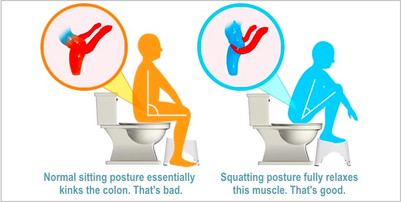I’ve now talked about the beginning of the digestion process. Next I went into how your body assimilates and uses the nutrients it’s consumed. The focus of this blog will be what happens at the end of the digestion process.

The End…
Or is it? Well technically the food we eat still has one more stop before leaving the body. The large intestine acts as a catch-all to make sure that nothing leaves that could potentially be used by the body. Here, some water is recycled and re-absorbed. With the help of bowel flora, the large intestine also captures any lost nutrients that are still available and converts the nutrients into the Vitamins K, B1, B2, B12 and butyric acid.
Poop, feces, excrement, doo-doo, dropping the kids off at the pool… Whatever YOU call it, it’s still the same thing. Now the waste is finally ready to leave the body. According to everydayhealth.com,
“Water makes up about 75 percent of your bowel movements. The rest is an often-stinky combination of fiber, dead and live bacteria, other cells, and mucus. Soluble fibers found in foods like beans and nuts are broken down during digestion and form a gel-like substance that becomes part of your poop.
On the other hand, foods packed with insoluble fiber, such as corn, oat bran, and carrots, are more difficult for your body to digest, which explains why they may emerge in the toilet bowl looking relatively unchanged.”
Now that we know what our poop is made of, let’s take a moment to talk about good postural alignment for eliminating your waste. After-all, it’s not something that’s really taught in school. Did you know there’s a right and wrong way to take a poo?

The invention of the modern-day toilet has transformed our lives in both positive and negative ways. It’s made it easier to relieve ones self on many occasions, however it has also removed the necessity for us to squat on a regular basis.
I think that the makers of the Squatty Potty explain it best when they describe what happens when we sit on the toilet:
“When we’re sitting this bend, called the anorectal angle, is kinked which puts upward pressure on the rectum and keeps the feces inside. This creates the need to STRAIN in order to eliminate. Compare sitting on the toilet to a kinked garden hose, it just doesn’t work properly. In a squatting posture the bend straightens out and defecation becomes easier.
Assuming the squat position is the natural way to achieve easier and more complete elimination. Research has shown that in some people, the kink is completely gone while squatting.”
So what to do? Aside from working on your deep air-squats – get yourself a small stool for your bathroom to elevate your feet each time you have to answer nature’s call. You could also go all out and get an official Squatty Potty as your latest bathroom accessory.
Now – let’s recap. Over the past few weeks, I’ve gone through the Top to Bottom path of digestion. Here are the main take-aways:
- You really ARE what you eat – every single thing you consume ends up in a complex breakdown, assimilation, elimination process. Our cells thrive or deteriorate depending upon what we feed them through our food and drink choices.
- As a culture, we are sympathetically stressed. We don’t take the time our body needs in order to digest our foods properly.
- You need a very acidic environment in your stomach to properly break down the bolus as it leaves your esophagus.
- If you have leaky gut or any other issue with the absorption of your nutrients due to inflammation or blockages, then you are not getting the most “bang for your buck” no matter how good the food is that goes into your mouth.
- For proper elimination, try assuming a more primordial position in a deep squat.
Remember to go back and checkout the other posts on the Top to Bottom of Digestion and Assimilation for even more specific tips!
~Dayna

If you’ve enjoyed this article, please consider purchasing recommended items at our Amazon Affiliate Store. The price to you is no different, but we can receive a small commission when you click through our links. Consider it a donation for allowing us to continue providing high-quality advice through our blog.